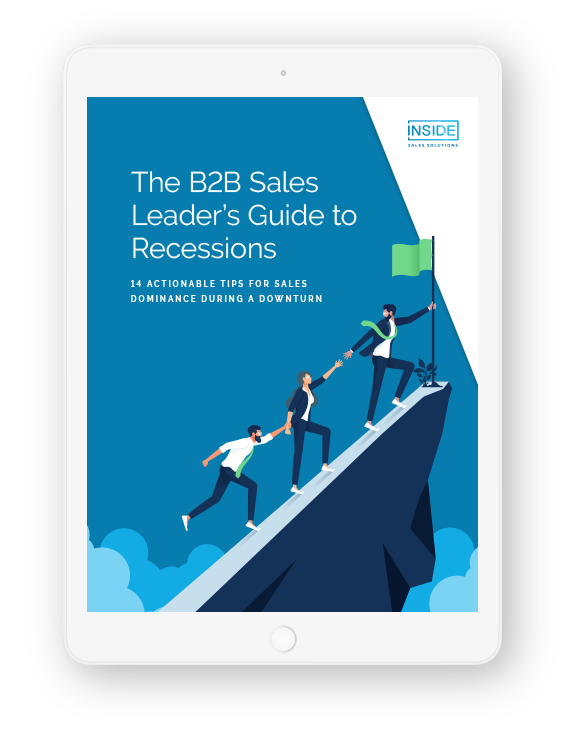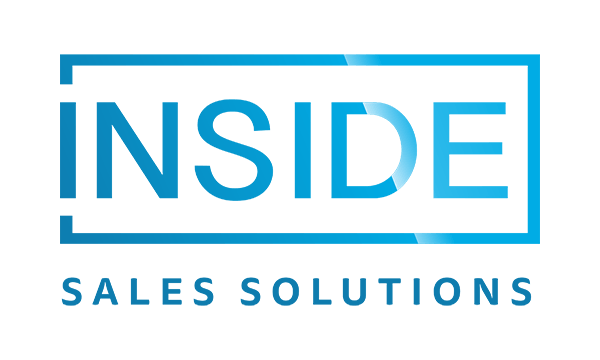Selling to C-Level Executives is a whole new ball game. You have to be pithy, respectful of their time, and you have to come up with ways to differentiate yourself from the competition. Otherwise you’ll have no hope in cutting through the clutter and earning the right to ask for something. In this blog, I give you some tips on C-level appointment setting and successfully selling in those appointments.
Take a look at this example from a C-level buyer:

Outbound tactics without strategy are completely absurd. Hammering away in blended channels is worthless without leading with an insight-driven value narrative. It is not what we use, but how we use it.
When selling to lower-level employees, there’s usually a multi-step process if they’re not the person making the ultimate purchase decision. By the time your pitch is run through the chain of command, your intended message will be dis-configured. If you can sell directly to C-level executives, and do it right, you will close sales much faster. The people who are making the decisions should be the ones to hear the facts straight from you.
So why are executive buyers so tough?
- They don’t buy into over the top ROI claims from sellers
- They’re numb to all the outreach being projected at them
- They are under pressure, swamped in workload and they are time poor
- They filter requests based on referrals from a trusted source (peers they respect or people who work for them)
Hubspot gives examples of emails that secured meetings with CXO.
Get the Ultimate Guide to Maximizing Channel Sales
1) Get a warm introduction
Getting a warm introduction from someone your target executive already knows is a great advantage in C-level appointment setting. Understanding the nature of the relationship with the introducer and the executive will give some context on how they will receive your information.
- Look at mutual connections on LinkedIn
- See if you know someone at their company
- Reach out to lower-level management
Prospects are more open to connecting with others who share a mutual connection. You can start by running through your existing network of colleagues, teammates, and clients. Use LinkedIn’s “How You’re Connected” feature to see your mutual connections.
If you personally know someone at their company, this is a great way to get your foot in the door. This is why it is always important to connect with those who also share connections with your friends. Sometimes it’s not what you know, but who you know.
Reach out to lower-level management. This is a great opportunity to find a window to the C-level exec. If you are on LinkedIn, 2nd and 3rd-degree connections would be a great opportunity to quickly expand into meeting lower-level management.
2) Do your research
Always come prepared. I am stating the obvious, however, this is one of the most important tips in this blog. Looking for a conversation without doing your research is unprofessional and shows a lack of respect. Do not use information that is irrelevant to the region or business either. Find credible sources, and speak to others in the same market. Executives are very numbers-driven, and place more value on proof.
Researching your target before your first email or call can make a world of difference between a deal or a bust. Here are a couple of steps you should take when you research:
- Learn about the company
- Do a background check
- Hypothesize Pain Points
Taking note of the company’s mission and vision can help paint a better picture for the exec. Some basic information that you should also take note of is the company size, number of employees, product or service offerings, and typical sale size.
3) Know what they want before they know they want it
At this point, you should be done with the basic questions and should already have well-rounded information about the company’s needs and background. You’ll also need to have a firm grip on what you can bring to the table. Occupied executives don’t have time to spoon-feed information or bide on details. If you understand their business goals and challenges they are much more likely to buy from you.
LinkedIn should be your number one go-to for this. You want to dig around and look for information around them such as their education and their role. This is important because this is where you build a persona around them. However you should not judge a book by its cover. Make sure to read and analyze whatever is in front of you.
Try to find out what a company is doing to tackle their problems relevant to your product or service offerings. Does the C-level executive know that your solution may be what will alleviate their challenges? This is all about relevancy, build an idea of who this person is, and what their pain points are within the company’s goals before you reach out to them. Be prepared to show them how your offering has helped others with similar challenges.
4) Strive to be a trusted advisor
Separate yourself in a way to captivate the organization by acting in their best interest rather than your own. Withstand the urge to push and close when they are not ready. Becoming a trusted advisor is earned over time through alignment with the goals of the executive and the organization. You should focus on the success of the customer rather than your own sales goal.
Being a trusted advisor is the first level out of 3 in the relationship with the C-level Executive.
Trusted Advisor – Collaboration and involvement in the planning process as well as trust with a personal connection.
Partner – Regarded as being strategic to the business and solicits your thoughts into the planning process.
Vendor – Transactions with exec and focusing on the primary way of defining greater value.
5) Be the CVO (Chief Value Officer)
When it comes to selling to c-level executives, time is money. A big complaint that most C-level executives talk about is the inability to get to the point. Remember you’re the Chief Value Revenue Officer in the room – from the perspective of both time and value. Sometimes you won’t have the luxury of setting up a PowerPoint or projector. When it comes to selling to C-level executives, you want your sales pitch to be compelling and concise.
A C-level executive will hardly ever object to a meeting being shorter than expected. But you must make sure you address a feasible solution that touches down on the challenges they are facing.
Also, keep this in mind. Reduce the overall negative impact of having a concise discussion about the value you will bring to the company.
Having trouble accessing the C-Suite? C-level appointment setting is our specialty. Check out the solutions Inside Sales Solutions can provide to ensure you are in front of the right people, at the right time, for the right reason.
Considering Outsourced Sales Development?
Take a peak at how B2B sales teams can overcome economic uncertainty.


